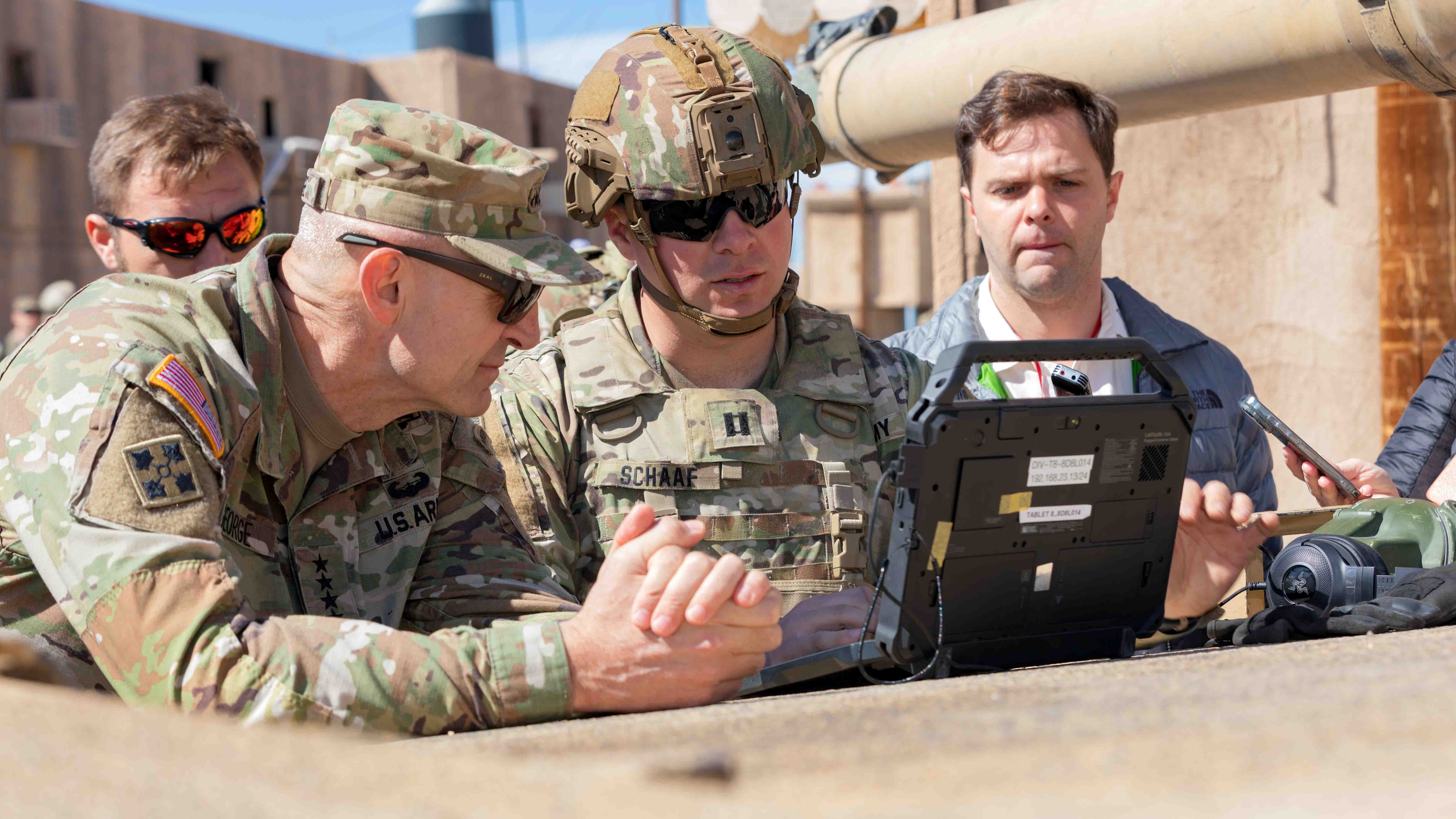George Pushes Army to Transform on the Move
George Pushes Army to Transform on the Move

Dominance on the future battlefield will depend on the Army’s ability to quickly adapt to new technology and transform while on the move, Army Chief of Staff Gen. Randy George said.
In remarks during a virtual event hosted by Defense One, George cited the importance of quickly putting new equipment into the hands of soldiers, including some who are deploying, so that the Army and its industry partners can adjust equipment and technologies based on their feedback.
He pointed to the value of Project Convergence, a joint and multinational experimentation event that took place in March at the National Training Center at Fort Irwin and the Marine Corps’ Camp Pendleton, both in California, as a proving ground for many of the concepts being tested by soldiers.
“Technology is moving really fast, and Project Convergence kind of gave us an opportunity to see just how we could do that,” George said at the March 22 Defense One event.
What he saw during Project Convergence at the National Training Center, George said, “reinforced what we’re looking at as far as transforming in contact, that we actually are going to take a unit, put these systems inside the units and then let them operate it. We’re going to get our best innovation from our soldiers working with these developers.”
Some systems being used now, he said, require soldiers to attend a weekslong course to learn how to operate, while other systems are so intuitive that soldiers are learning them on the fly.
George offered some examples, such as the modular Ghost unmanned aerial system that a soldier was able to “master” in one day, and a tablet-like command-and-control system that a platoon leader learned how to operate “by playing around with it for a couple of hours.” A soldier operating another piece of equipment suggested it would be better with a text box, and a correction “was made overnight,” George said.
The capabilities of ground and aerial robotics also were demonstrated at Project Convergence. “We’ve all seen how the battlefield is changing,” George said. “We know that you can’t be having these big command-and-control nodes that are out there. We know that machines can do a lot of things much more effectively and much cheaper, and we’re going to have to incorporate them into our formations.”
Robotics will be “infused into” some brigades that have been selected to “transform in contact,” and a determination will be made about “what needs to happen at each level,” George said. “We all talk lot about incremental improvement, and I think that that’s what we're looking at. Obviously, some of the higher end systems may take a little bit longer.”
George said the Army wants to “lighten the load, have less complex, more intuitive formations, a lower signature, and we saw all of that at the National Training Center.”

